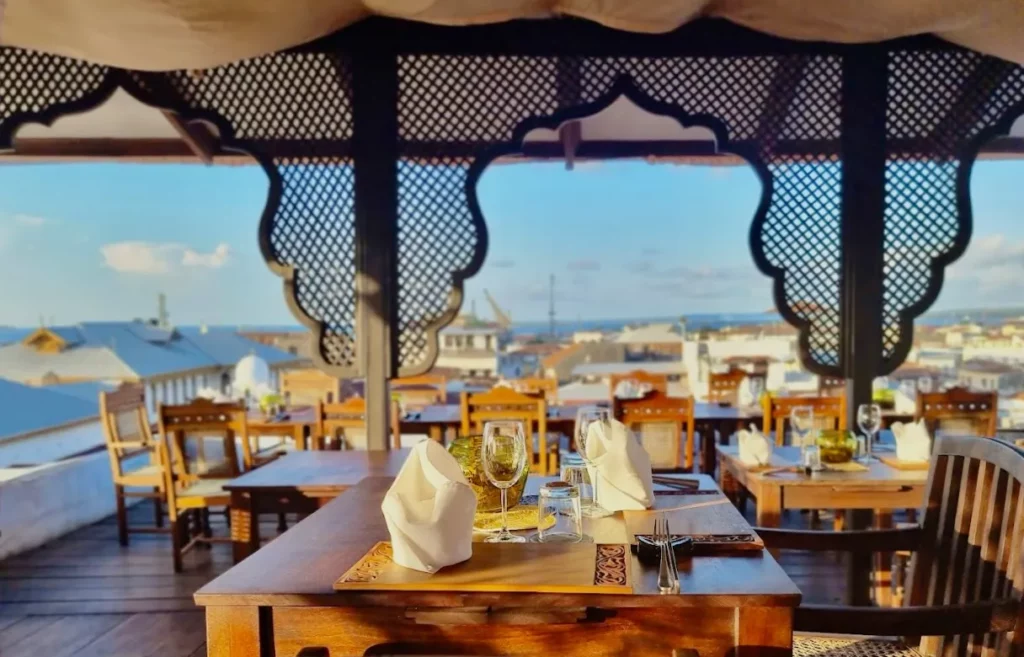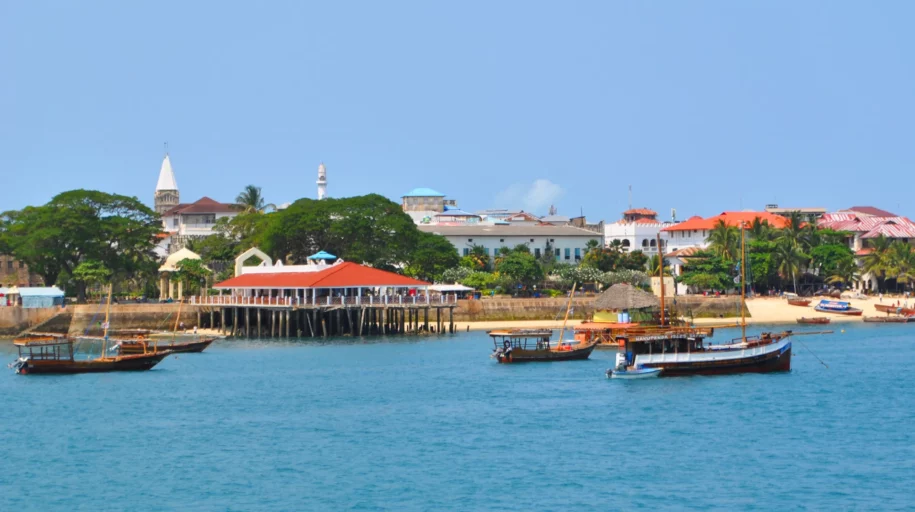Stone Town isn’t just a destination—it’s a dream carved in coral stone and scented with cloves. Nestled on the western edge of Unguja Island, this UNESCO World Heritage Site is a labyrinth of history, mystery, and cultural fusion. A day here is not merely a sightseeing excursion; it’s a journey through the pulse of Swahili civilization, the opulence of sultans, and the resilience of people who have shaped this cultural mosaic for centuries.
What to See, Taste, and Experience in Stone Town
Lose Yourself in the Labyrinth

Step into Stone Town, and the first thing that strikes you is the maze of narrow, winding streets—none of them ever straight, none of them designed for maps. These alleys weren’t made for cars but for donkeys, traders, and whispers carried on the breeze. As you wander, you’ll brush past centuries-old buildings where Swahili, Indian, Persian, and Arab influences intertwine like vines on a spice tree.
Stuccoed balconies hang low over alleyways where time seems to pause. You might take a left turn thinking you’re heading west, only to emerge in a completely different quarter, delighted and confused in equal measure. This is not a place for plans—it’s a place for wandering.
The Doors That Speak
One of the most iconic features of Stone Town are its elaborately carved wooden doors. These aren’t just functional entrances; they’re storytellers. Some boast intricate floral Indian designs with brass studs—originally meant to deter elephants (yes, elephants). Others bear inscriptions in Arabic, symbols of protection, or motifs that whisper of the homeowner’s wealth, trade, and faith.
Every door is unique, and pausing before them becomes a kind of meditation. You’re not just admiring craftsmanship—you’re decoding history.
House of Wonders: A Palace of Firsts

At the heart of Stone Town’s waterfront stands the House of Wonders (Beit al-Ajaib), the grandest of Sultan Barghash’s palaces. When it was built in 1883, it was the first building in East Africa to have electricity and an elevator—hence the name. Though currently undergoing much-needed restoration, its sweeping colonnades and ornate balconies still command awe.
It’s a living symbol of a time when Zanzibar was not a sleepy backwater, but the center of commerce and culture on the Swahili Coast. And even under scaffolding, it whispers of grandeur that refuses to fade.
The Old Dispensary and the Echoes of Empire
Just down the road from the House of Wonders is the Old Dispensary, a stunning blend of Indian latticework and European balconies. Built by a wealthy Ismaili merchant, this building is a masterpiece of multicultural architecture, originally offering medical services to the poor. Today, it’s a beautiful relic—its tiles still gleaming, its wooden carvings still delicate.
The Slave Monument and the Cathedral

Beneath the surface charm of Stone Town lies a painful legacy. The Slave Monument, outside the Anglican Cathedral, is stark and unforgettable. Bronze figures, shackled together in a sunken pit, stand in eerie silence. It marks the site of the last open slave market in East Africa, a reminder of Zanzibar’s complex past as both a cultural crossroads and a hub of human suffering.
The Cathedral itself is a symbolic reclamation: built atop the old slave whipping post, its altar sits exactly where that pillar once stood. It’s a quiet, solemn place—its beauty shadowed by memory, yet filled with hope and redemption.
The Sultanate and the Pinnacle of Swahili Civilization
Stone Town was the capital of the Omani Sultanate in the 19th century, and under Sultan Said bin Sultan, it flourished as the glittering jewel of the Indian Ocean. The Sultan moved his court from Muscat to Zanzibar, transforming the island into the linchpin of a vast empire stretching across East Africa.
Here, Swahili culture bloomed—an elegant fusion of African roots and Arab refinement. Poetry, music, architecture, and trade flourished in a society where dhow sails met spice-laden winds and minarets rose over coral-stone mansions.
To walk through Stone Town is to trace the footsteps of sultans, scholars, sailors, and slaves. It’s a reminder that this tiny place was once the beating heart of an oceanic kingdom.
Forodhani Gardens: A Street Food Feast

As the sun dips over the Indian Ocean, Forodhani Gardens comes to life. Lanterns flicker, grills sizzle, and locals and travelers alike flock to this oceanfront promenade for Zanzibar’s most famous street food experience.
Try Zanzibar pizza—a chaotic but delicious mix of egg, minced meat, cheese, and vegetables wrapped in dough and fried to crispy perfection. Or go local with mishkaki (meat skewers), samosas, coconut bread, and fresh sugarcane juice with a zing of ginger and lime. Seafood lovers will swoon at the grilled lobster, octopus, and calamari straight from the ocean.
Eating at Forodhani is more than a meal—it’s theatre. The vendors slice, flip, grill, and serve with the flair of seasoned performers. It’s loud, colorful, chaotic, and utterly unforgettable.
Rooftops and Sundowners: Stone Town from Above

After a day of exploring the city’s cobbled chaos, ascend to one of Stone Town’s many rooftop restaurants. The views? Breathtaking. The vibe? Chill meets cinematic.
Places like Emerson on Hurumzi or Upendo House Rooftop offer panoramic scenes of domed mosques, rust-red rooftops, and the golden curve of the sea. As the call to prayer echoes across the town, sip on a spiced cocktail or chilled glass of wine. Watch the sky turn sherbet-pink and the dhows glide back to harbor, their silhouettes poetic against the twilight.
It’s hard to imagine a more romantic, more quintessentially Zanzibar moment.
Flavors of the Swahili Table
Zanzibar’s cuisine is a love letter to its history. Influences from India, Arabia, Persia, and the African mainland meet in curries laced with coconut milk, seafood infused with cloves, and rice dishes like pilau and biryani.
Sample a hearty octopus curry, rich and comforting. Try urojo, a tangy, soupy street food dish also known as Zanzibar Mix. Or bite into mandazi, a fluffy Swahili doughnut that pairs perfectly with spicy masala tea.
To eat in Stone Town is to taste centuries of cultural exchange—flavors born on the wind and anchored in community kitchens.
Souvenirs with Soul: Spices, Oils, Chests, and Jewelry
The shopping in Stone Town is as rich as its history. Skip the generic trinkets and seek out boutique souvenir shops nestled in old alleyways. Here, you’ll find:
- Essential oils distilled from clove, cinnamon, ylang-ylang, and lemongrass
- Zanzibar chests—carved treasure boxes often inlaid with brass, once used to store dowries
- Handmade jewelry, often featuring coral, turquoise, and local silverwork
- Khangas and kikoys, brightly patterned cloths with Swahili proverbs stitched along the borders
Shopping here is a sensorial experience—colors, textures, and aromas woven into every encounter.
Spice Tours: Rooted in the Island’s Identity
A visit to Zanzibar without a Spice Tour would be like skipping wine in Bordeaux. Just outside Stone Town, lush plantations unfold in shades of green, where guides pluck cloves, nutmeg, vanilla, cardamom, and pepper straight from the trees and vines.
You’ll rub leaves, sniff bark, and taste fruits you’ve never seen before—all while learning how Zanzibar became the “Spice Island.” It’s educational, yes—but also surprisingly magical. You’ll leave with spice packets and a whole new appreciation for your kitchen rack.
Prison Island: Tortoises and Tales of Confinement
A short boat ride from Stone Town lies Prison Island, or Changuu Island. Initially built as a prison for rebellious slaves, it was later used as a quarantine station.
Today, it’s a haven of turquoise waters, snorkeling opportunities, and one very slow-moving attraction: the giant Aldabra tortoises, some of which are over 100 years old. They roam the sanctuary lazily, offering you the chance to feed them and marvel at their ancient grace.
The island also offers beautiful coral reefs, white beaches, and ghostly colonial architecture that still stands in soft decay.
Stone Town: The Soul of Zanzibar
Stone Town isn’t just the historic district of Zanzibar—it is its heart, its archive, its beating rhythm. It’s where sultans ruled, spices flowed, and cultures collided to form something utterly unique and utterly enchanting.
Spend a day here, and you’ll feel the echoes of history. Spend a night here, and you’ll understand its magic. The smell of cinnamon on the breeze, the hum of voices in the alleyways, the shimmer of lanterns in the dark—these are not memories you forget.
To explore Zanzibar and skip Stone Town would be like visiting Paris and ignoring the Eiffel Tower. You haven’t truly tasted the island until you’ve wandered its winding lanes, watched the sunset from a rooftop, and let the centuries whisper to you in the stillness of its oldest streets.
Stone Town is not a detour—it’s the destination.
Discover Stone Town with Equator Tours
Explore Stone Town and the Prison Island with the Sultan’s Trails package from Equator Tours. Finish the epic day of exploration with an uforgettable rooftop dinner above Stone Town’s rooftops!


Leave a Reply